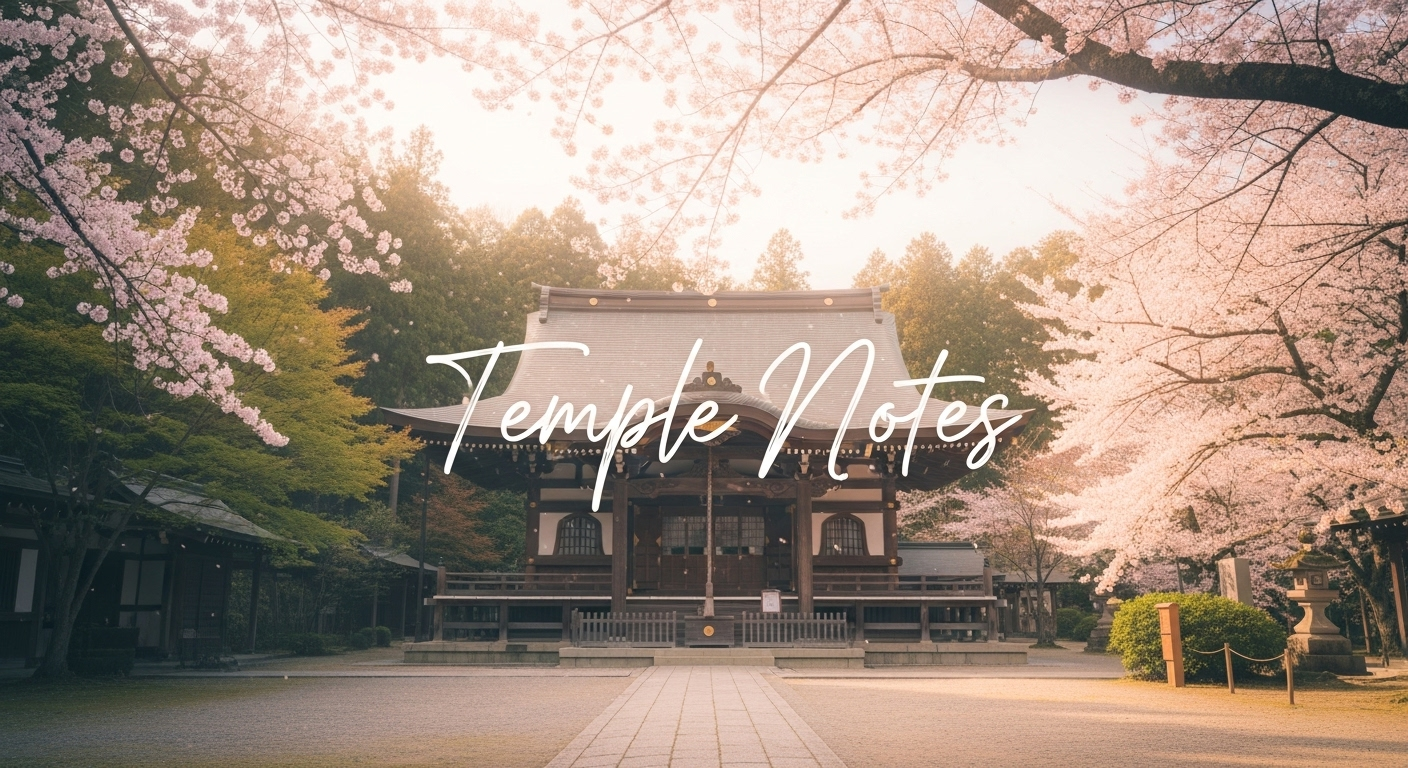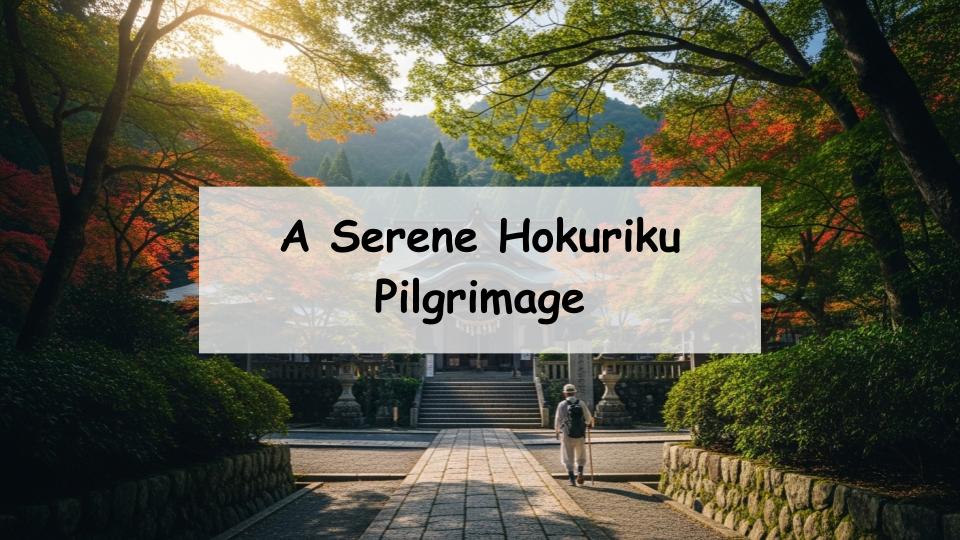When exploring tourism and pilgrimages in the Hokuriku region of Japan, you may come across the term “Hokuriku 33 Kannon” but wonder what kind of pilgrimage it is and which temples are worth visiting.
The Hokuriku 33 Kannon pilgrimage consists of visiting 33 sacred Kannon temples scattered across Ishikawa, Toyama, and Fukui prefectures. It offers travelers the chance to experience history, faith, and culture while enjoying scenic landscapes.
In this article, we explain the history and significance of the Hokuriku 33 Kannon pilgrimage and highlight five must-visit temples. Whether you are planning a sightseeing trip or starting a pilgrimage, this guide will help you plan your journey.
What is the Hokuriku 33 Kannon? History and Background
Origins of the Hokuriku 33 Kannon
The Hokuriku 33 Kannon pilgrimage was established to organize regional Kannon worship into a structured route. The number 33 represents the thirty-three manifestations of Kannon Bodhisattva. The pilgrimage has long been a way for people to pray for blessings and protection.
Why the Pilgrimage Began
Initially, pilgrims visited the temples seeking health, safety, and family blessings. Over time, the pilgrimage evolved into a cultural experience, attracting visitors who are interested in both faith and history.
Differences from Other 33 Kannon Pilgrimages
Compared to other 33 Kannon pilgrimage circuits in Japan, Hokuriku’s route reflects the unique culture and natural beauty of the region. The temples are often surrounded by coastal scenery or mountains, offering a distinctive experience in each location.
Attractions of the Hokuriku 33 Kannon Pilgrimage
Experience History and Faith
Visiting these ancient temples allows travelers to engage with the region’s history and religious traditions. Each temple tells a story through its architecture, statues, and preserved relics.
Enjoy Nature and Local Culture
The pilgrimage is enhanced by Hokuriku’s natural beauty, including the Sea of Japan coastline, the Tateyama mountain range, and seasonal changes such as cherry blossoms in spring and colorful leaves in autumn. Local cuisine and crafts also add to the richness of the journey.
Collecting Goshuin and Using a Nokyocho
Goshuin (temple stamps) and nokyocho (stamp books) are central to the pilgrimage. Collecting them provides a tangible record of your journey and adds a sense of accomplishment.
Complete List of Hokuriku 33 Kannon Temples
Fukui Prefecture
- Nakayama-dera – Takahama
- Baigu-ji – Takahama
- Myoraku-ji – Obama
- Tada-ji – Obama
- Haga-ji – Obama
- Tentoku-ji – Wakasa
- Mikata Ishikannon – Wakasa
- Hosan-ji – Echizen
- Fukutsu-ji – Echizen
- Dai-an-ji – Fukui
- Ryutani-ji – Sakai
Ishikawa Prefecture
- Natadera – Komatsu
- Hoen-ji – Kanazawa
- Hasedera Kannon-in – Kanazawa
- Soji-ji Soin – Wajima
- Iwakura-ji – Wajima
- Jōnichi-ji – Noto
- Meisen-ji – Anamizu
- Myokan-in – Nanao
- Yamada-dera – Nakanoto
- Chōraku-ji – Nakanoto
- Eikō-ji – Hakui
Toyama Prefecture
- Jōnichi-ji – Himi
- Kokutaiji – Takaoka
- Renge-ji – Takaoka
- Kannon-ji – Oyabe
- Ango-ji – Nanto
- Senko-ji – Tonami
- Joraku-ji – Toyama
- Kaizen-ji – Toyama
- Shogen-ji – Toyama
- Jusan-ji – Nyūzen
- Hōfuku-ji – Kurobe
Five Must-Visit Temples
No.1 Nakayama-dera (Fukui Prefecture)
This temple marks the starting point of the Hokuriku 33 Kannon pilgrimage. Located at the foot of Mt. Aoba, Nakayama-dera has a historic main hall and beautiful seasonal scenery.
No.3 Myoraku-ji (Fukui Prefecture)
Situated in Obama, Myoraku-ji preserves cultural heritage dating back to the Kamakura period. The temple’s historic halls and Thousand-Armed Kannon statue make it a rewarding visit.
No.12 Natadera (Ishikawa Prefecture)
Natadera is famous for its dramatic rock formations, moss-covered gardens, and its secretive statue of the Thousand-Armed Kannon. The temple blends natural beauty with spiritual significance.
No.23 Jōnichi-ji (Toyama Prefecture)
Located in Himi, this temple is famous for its ancient ginkgo tree and panoramic views of the surrounding mountains and sea. The combination of nature and spirituality makes it a remarkable stop.
No.24 Kokutaiji (Toyama Prefecture)
Kokutaiji, a Zen temple in Takaoka, features a serene stone garden and well-preserved halls. Its tranquil atmosphere is perfect for meditation and reflection.
How to Enjoy the Hokuriku 33 Kannon Pilgrimage
Transportation Options
Many pilgrims use cars for efficiency, but trains and buses can also be combined for a relaxed experience. Walking is possible for nearby temples, but requires planning and sufficient time.
What to Bring
Bring a nokyocho (stamp book), goshuin ink, comfortable clothing, water, and rain gear. Small cash is recommended for temple offerings and stamps.
Advice for First-Time Pilgrims
Start with a few nearby temples to learn the process and enjoy the experience. Follow proper temple etiquette and plan a realistic itinerary to fully enjoy the pilgrimage.
Conclusion: A Spiritual Journey in Hokuriku
Summary
The Hokuriku 33 Kannon pilgrimage combines history, faith, and nature into a unique journey. From ancient temples to breathtaking landscapes, it offers both cultural and spiritual enrichment.
For New Pilgrims
Start with the temples that interest you most. Collect goshuin in your nokyocho while enjoying Hokuriku’s scenic beauty and serene temples for a deeply fulfilling experience.
A Message from the Guide

In Hokuriku, there are historically significant large temples such as Eihei-ji in Fukui Prefecture and Zuiryu-ji in Toyama Prefecture, making them convenient starting points for your journey.











Comment